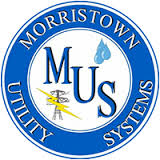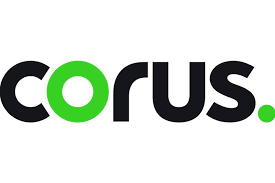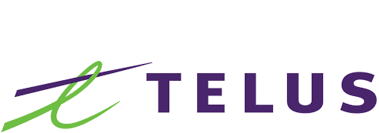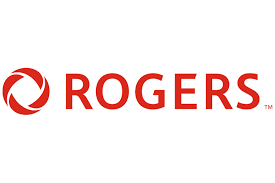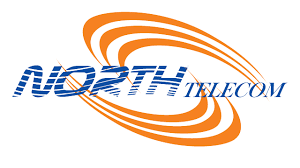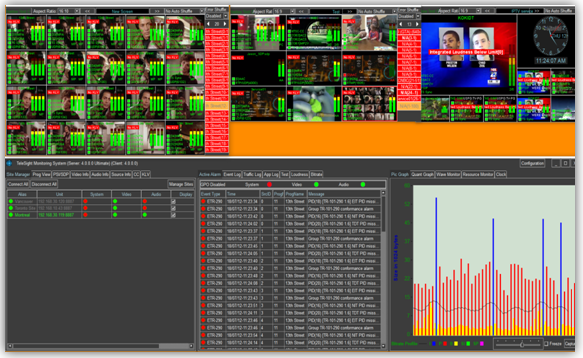Video Quality Monitoring for Cable, Telco, and Broadcast Service Providers
Today’s digital broadcast environments are complex, with various sources, compression standards and formats, and technologies and devices. In the perfect scenario, all these video formats, devices, encoding, and decoding technologies work together to deliver the highest level of video and audio quality. However, errors will occur at various points throughout the media distribution chain from acquisition to transmission. These errors can range from minor to major, persistent defects in the video stream.
TeleSight provides broadcasters with comprehensive solutions that allow them to monitor, test, and analysis the quality of the video broadcast from multiple input sources — IP, ASI, DVB-T/T2, DVB-S/S2, and SDI (HD/SD) — in a single system. TeleSight’s ability to support compressed and uncompressed video makes it a flexible and cost-effective solution for content providers, broadcasters, and production facilities working in IP and hybrid infrastructures.
- Support multiple sources – IP, ASI, SDI, and RF
- Monitoring multiple sources and points in the distribution chain
- High-bandwidth and high-density monitoring
- Transport stream statistics and measurements
- Video quality – black, frozen, blockiness, pixilation
- Active alarms, notifications, and logging (Email, SMS, SMNP)
- Real-time visibility and confidence monitoring
Take me there
Have a questions?
TeleSight Real-time Video Headend Monitoring for Cable, Telco, and Broadcast Service Providers
TeleSight provides broadcast heandends and NOC operators with real-time visibility and operational insight to detect issues quickly across various points within their video distribution workflow.
Real-time Multiviewer
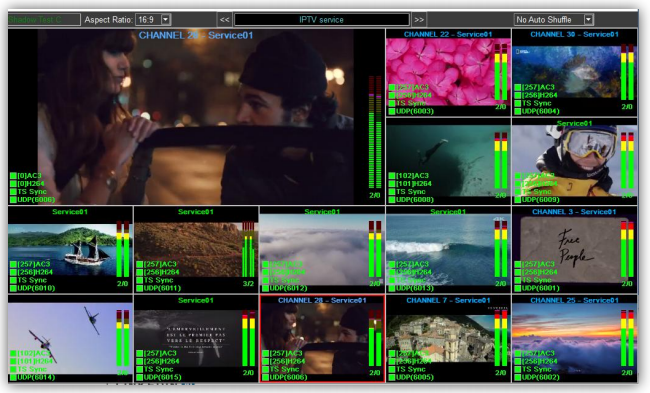
MiraVid couples confidence monitoring with complete testing and analysis of video streams for cable, satellite, telco, IPTV, and over-the-top (OTT) services with full multiviewer capabilities. Its customizable real-time multiviewer display of up to 100 video streams on a single mosaics screen. On-screen video stream statistics and alarms provide you with the overall health of your services at a single glance.
Real-time Alerting
On a typical day Network Operators need to address a range of problems in their control room, while simultaneously monitoring numerous program channels, so considerable time may elapse before a problem is noticed. Real-time alerting notifies the operator of any issues that arise, so that action can be taken to ensure minimal impact on customers. TeleSight’s comprehensive set of reporting capabilities exposes the origin of the problem and the level of impact (system, video, or audio) for faster and more efficient troubleshooting.
Error Logging & Recording
Alarms and error logging can be configured for a local log, SNMP, Syslog, and Email/SMS alerts (upon critical error detection). An external alarm device (buzzer, light) can be integrated to troubleshoot problems.
The system also provides stream recording capabilities to capture and record a video stream upon error automatically or manually. Automatic stream recording enables the automatic capture of stream data before and following an error condition (in system, video or audio layers). Source data captured will be saved from 3 seconds before the error and 1 to 60 seconds after the error happens.
QoE Tests & Alarms
Being alerted of video service and quality issues is critical for Video Service Operators to quickly troubleshoot and fix the problem.
Alarms and alerts are easy to set up based on constraints and thresholds that you defined in the system. Once an alarm is detected, such as a black and frozen video, the alarm message will appear on the Active Alarms dashboard and the video multiviewer screen. This allows for quick identification of any issues.
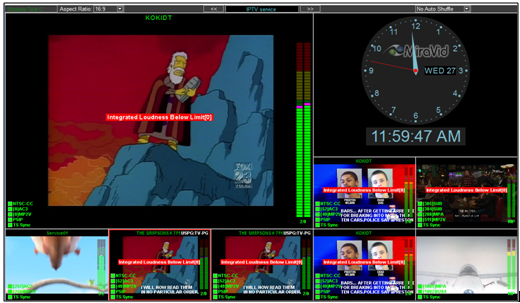
QoS Test & Alarms
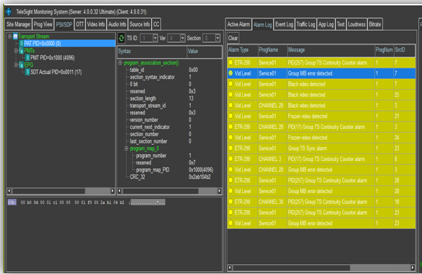
Being alerted of video service and quality issues is critical for Video Service Operators to quickly troubleshoot and fix the problem.
Active Alarms are displayed in real-time. Once an alarm is detected, such as a black video, the alarm message will appear on the Active Alarms window and the video mosaic (multiviewer) screen. This allows for quick identification of any issues.
Video Compression Analysis
The MiraVid system provides a comprehensive set of system (TR-101-290), video, audio quality tests, and additional measurements and analysis to help operators identify and efficiently troubleshoot issues.
Video conformance syntax testing and alarms detect video quality issues, including blockiness, pixelations, and video corruption problems. Also, PSI table analysis, GOP structure picture graph, quantization graph, and bitrate charts provide the operator with further insight into how the streams are encoded and opportunities where video quality can be improved.
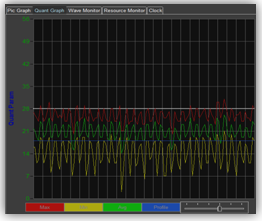
The MiraVid system allows you to centrally monitor and control multiple monitoring systems within a centralized facility or across remote locations. The Operator can view the overall health of their services across each remote site and monitoring point. Status indicators highlight problems at each site and a full real-time multiviewer display and problem alert at each location.
TeleSight allows operators to monitor and analyze their video services with confidence. It offers real-time decode, display, and stream analysis, including TR-101-290, video black and freeze, video codec conformance, and audio level tests. Its multiviewer display is highly configurable with on-screen alarms and notifications.
TeleSight’s advanced level video testing provides in-depth video conformance (syntax level) testing for compressed video at the syntax and macroblock level. Video conformance testing detects blockiness and pixelation issues.
We’d love to show you how TeleSight can help you monitor your video services. Complete the form and someone will contact you to schedule an online demo and answer your questions.
If you are interested in a sales quote, we need more information about your project.
OUR CUSTOMERS
trust us because their quality of experience matters.







